How to fix the “AirPlay not working” issue on iPhone, iPad, Mac, and Apple TV
- AirPlay issues usually come down to Wi-Fi and device compatibility.
Make sure both devices support AirPlay, are on the same Wi-Fi network, powered on, awake, and updated to the latest iOS, macOS, or tvOS version. - Quick troubleshooting steps can fix most AirPlay errors.
Restart your devices and router, toggle Wi-Fi on and off, check your firewall settings, and limit AirPlay to one active stream at a time. Disabling VPNs or iCloud Private Relay can also help. - Specialized tools help when Wi-Fi strength is the problem.
Apps like NetSpot and WiFi Explorer visualize and improve your signal, fix interference, and boost connectivity to make AirPlay more stable. - Alternative apps can bypass AirPlay entirely.
If AirPlay still won’t connect, use JustStream to mirror or stream from Mac to any TV or Chromecast in 4K/HD, or Transloader to send downloads remotely when on different networks. All included in Setapp’s app collection. Try Setapp free for 7 days.
Normally, the AirPlay icon shows up on your iPhone or Mac once it’s on the same WiFi as the Apple TV you’re trying to stream to. Unfortunately, there are also times when the “Apple AirPlay not working” issue appears with AirPlay unable to connect, Apple TV not working, or AirPlay not showing up on Mac.
Quick tips to fix the “AirPlay not working” issue
I'll start with the brief instructions. If you feel that they are not precise enough, scroll down to see more detailed descriptions, screenshots, and examples.
| Problem | Things to check and troubleshooting steps |
| General AirPlay issues |
• Verify AirPlay support on both devices. • Power on, close, awake (plug in). • Same Wi-Fi • One stream at a time • Toggle Wi-Fi • Restart devices + router • Update iOS/macOS/tvOS |
| Unable to connect |
• Forget/rejoin Wi-Fi • Mac: Disable Firewall or unblock incoming • Move/restart router • Alternative: Transloader (remote via iCloud) |
| Icon missing on MacBook (sender) |
• Wake receiving device • Apple TV: Settings → AirPlay → ON • Add to menu bar (Control Center) |
| Mac not discoverable (receiver) |
• Check model compatibility • Enable: System Settings → General → AirDrop & Handoff → AirPlay Receiver • Allow “Anyone” or “Current User” |
| Apple TV not found |
• Toggle AirPlay OFF/ON in Settings • Wake with remote |
| Screen mirroring fails/freezes |
• Use NetSpot (signal map, interference) • Use WiFi Explorer (channel/coverage graphs) |
| AirPlay issues on MacBook |
• Same Wi-Fi/proximity • Allow in Firewall • Loosen Receiver restrictions • Reboot (for Apple Silicon Mac) • Reset NVRAM (⌥⌘PR at boot for Intel Mac) • Audio: Boom 3D for volume/surround |
| iPhone/iPad issues |
• Confirm via Control Center icon • Toggle Wi-Fi • Restart |
| Apple TV bypass |
• JustStream: Direct stream to TV/Chromecast (4K/HD) • One Switch: Quick macOS toggles |
How to fix the “AirPlay not working” issue: Detailed explanations
The first thing you want to get out of the way when trying to fix AirPlay connectivity is to check that both of your devices (the one you want to send your content from and the one that’s meant to play it) support AirPlay. (You can find the list of supported devices on Apple’s website.)
Once you’re certain that your devices are good to go with AirPlay, there are easy things you can try to see if you can get your Apple AirPlay not working issue resolved quickly:
- Check that your devices are powered on, close to each other, and awake (to prevent your iPhone or iPad from going into sleep mode, keep them plugged into a power source)
- Reconnect both devices to the same Wi-Fi network
- Make sure there is only one device using AirPlay to stream at a time
- Turn Wi-Fi off and then on again on both devices
- Restart iPhone, TV, and all the participating devices — including your Wi-Fi router
- Update to the latest versions of iOS, iPadOS, and macOS
How to fix AirPlay is unable to connect
If you’re stuck with AirPlay unable to connect your Mac to Apple TV or your iPhone to Mac, in most cases the reasons for AirPlay not working will have to do with the quality of your Wi-Fi connection or firewall settings on Mac.
To troubleshoot Wi-Fi connection:
- Refresh your Wi-Fi: forget the Wi-Fi network in Wi-Fi settings and join again
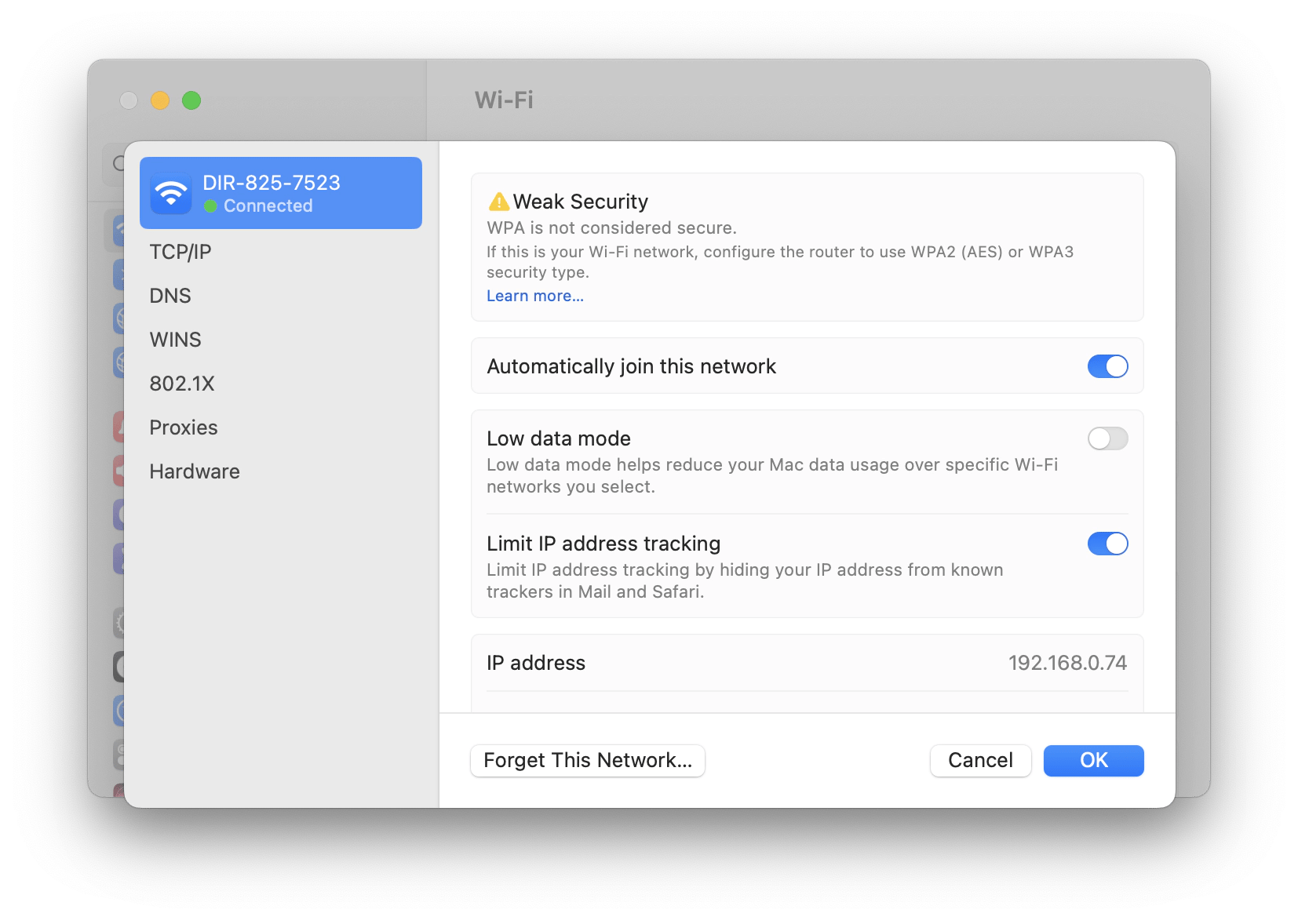
- Check Firewall settings on your Mac (System Settings ➙ Network ➙ Firewall: turn the Firewall off or uncheck “Block all incoming connections” in Firewall Options).
- Move the router closer to devices attempting to AirPlay or restart it.
- Disable any VPNs on your devices. VPN tunnels can sometimes block multicast traffic, which AirPlay relies on to connect devices.
- Check if you're using corporate profiles or managed devices. If you’re using a managed network or a company-issued device, AirPlay might be restricted by internal policies. In that case, the only solution is to contact your IT team for support.
- Temporarily disable iCloud Private Relay. If you have an iCloud+ subscription, you have access to iCloud Private Relay — a feature that helps protect your privacy when browsing in Safari. Normally, iCloud Private Relay shouldn’t interfere with local AirPlay connections, but it’s worth testing. Try disabling it temporarily: On your iPhone or iPad, go to Settings menu → [your name] → iCloud → Private Relay, and turn it off for a short time.
- Check other devices if needed. Learn how to fix the Apple TV remote not working properly.
For the times when you can’t be on the same Wi-Fi with your Mac but would still like to download content to it remotely, try Transloader.
Transloader uses its iOS, iPadOS, and macOS versions and your iCloud to remotely download links to your Mac. You drop a download link to Transloader on one of your Apple devices, choose which Mac you want the link to download to (you can even download to multiple Macs) — and the download starts automatically. You can use this tool to download apps to Mac from your iPhone, send web links you’d like to check out on a bigger screen, and many more.
How to fix AirPlay not showing up on Mac
AirPlay is a native feature on any Apple device and is supposed to show up automatically once both of your devices are turned on and are connected to the same WiFi network. So if you don’t see the AirPlay icon in your Mac’s top menu bar, try the following:
- Make sure that the receiving AirPlay device (such as your Apple TV) is on and awake.
- Check if AirPlay is enabled on your Apple TV (Apple TV Settings app ➙ AirPlay & HomeKit ➙ AirPlay).
- Add the AirPlay icon to the menu bar of your Mac (you can easily access an AirPlay option on a Mac running Ventura in the Control Center).
Note: The situation is a little different with AirPlay not showing up on Mac, when you’re trying to AirPlay content to it. Not all Macs you can AirPlay from are capable of receiving AirPlay (check your Mac’s model in the Apple Continuity system requirement list). Even if your Mac’s eligible for receiving AirPlay, you need to first set it up to become an AirPlay Receiver (Apple menu ➙ System Settings ➙ General ➙ AirDrop & Handoff ➙ AirPlay Receiver).
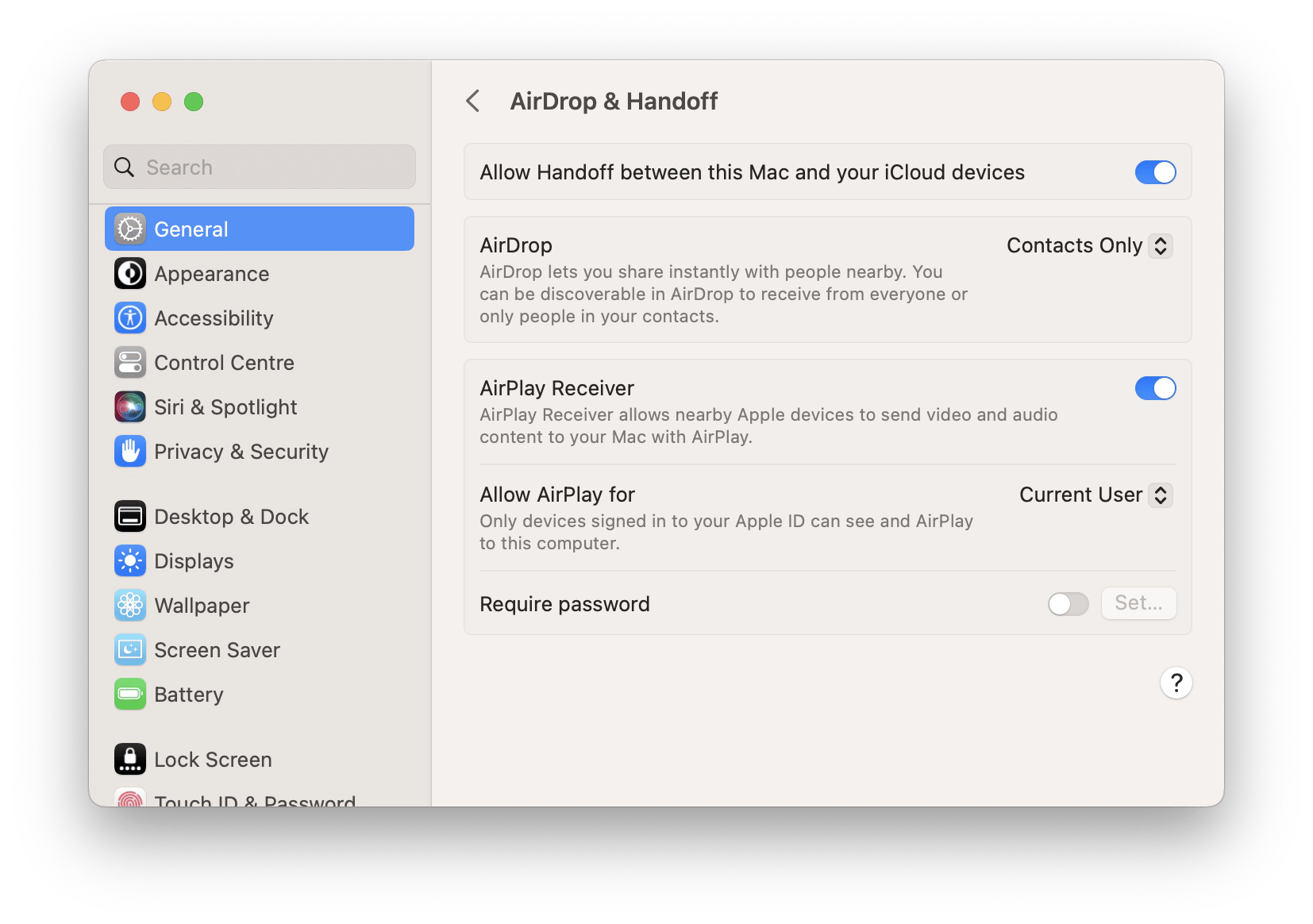
How to fix Apple TV not working
If you’re trying to AirPlay to your Apple TV but it wouldn’t show up in the list of available devices when you tap the AirPlay icon on your iPhone, there are a couple of things you can try to help your Apple TV become discoverable again:
- Make sure it has AirPlay enabled (you can check that AirPlay works in System Settings menu ➙ AirPlay & HomeKit ➙ AirPlay)
- Try turning AirPlay on Apple TV off, wait for a few seconds, then turn it back on
- Check that your Apple TV didn’t go to sleep while you were looking for the files you want to stream (if it did, simply press the power button on your Apple TV remote to wake it up)
How to fix Screen mirroring not working
Trying to mirror your screen to Apple TV or Mac but can’t establish the connection? AirPlay mirroring freezes in the process? Most of the time the reasons for these cases of screen mirroring not working have to do with your internet connection issues — such as strength of the signal, bandwidth limitations, interference from other wireless signals, or physical obstructions between the devices that hinder the connection.
Normally, you wouldn’t be able to troubleshoot these issues on your own without consulting a professional. But thanks to NetSpot and WiFi Explorer network diagnostic apps — you can now check whether your wireless signal is the reason for Apple AirPlay not working without any special technical knowledge.
NetSpot is a Wi-Fi booster app that lets you optimize your network performance by finding and fixing weak spots in your WiFi coverage. It finds and analyzes wireless networks around you in real-time and comes back with the detailed info on bandwidth, quality of signal, percentage of noise, and much more.
With NetSpot you can:
- Perform live Wi-Fi scans with built-in speed tests for the specific spots in your living, outdoor, or office space
- Visualize the areas where the signal is strong and where it’s weak
- Find channel interferences
- Adjust the locations of your access points and choose placement for additional hotspots, if needed
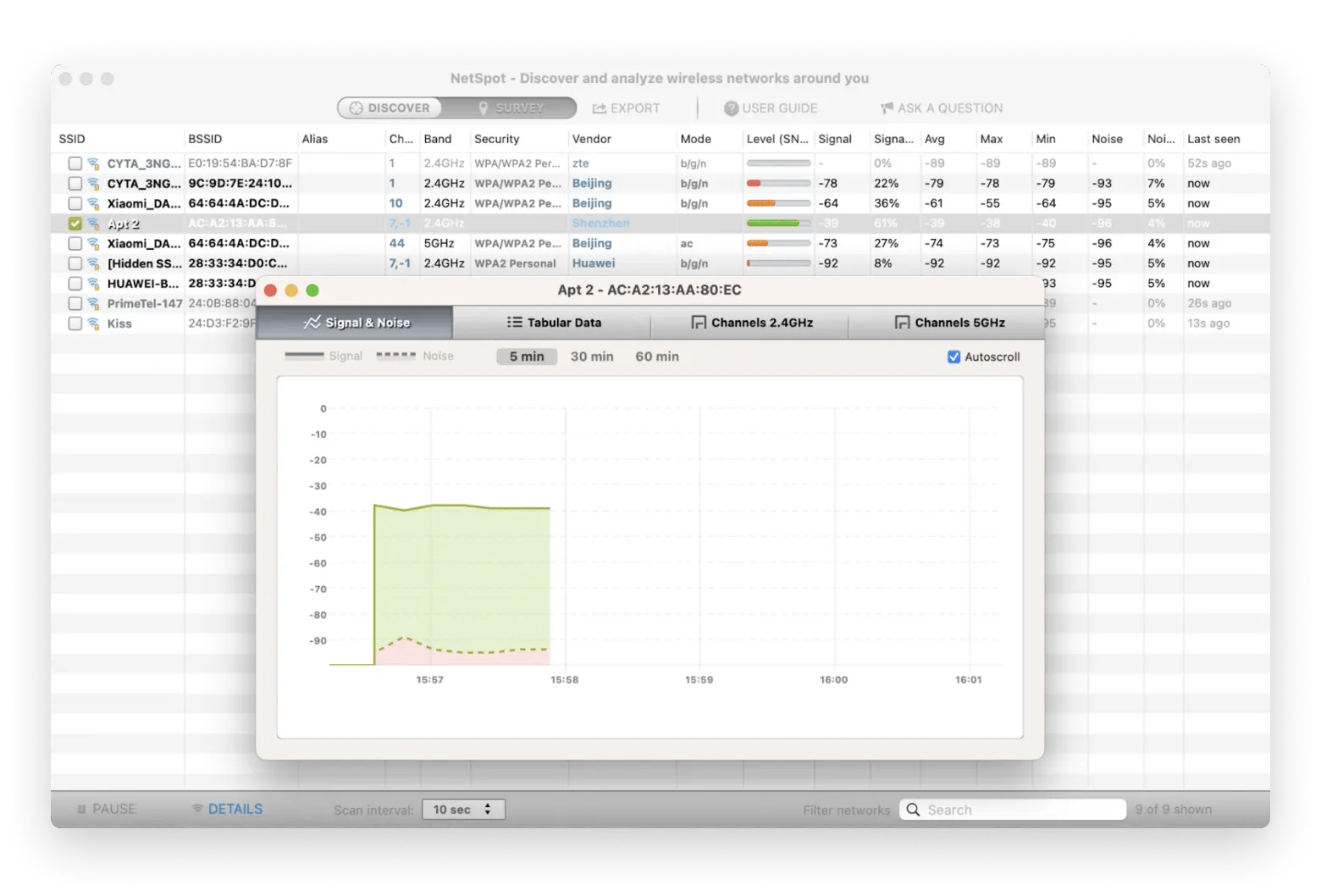
Another great network analyzer that helps identify and fix common network problems with your connection is WiFi Explorer.
WiFi Explorer identifies channel conflict and coverage issues by scanning your network environment and presents its findings as visual graphs, so that you can assess the situation at a glance without having to dive into the numbers.
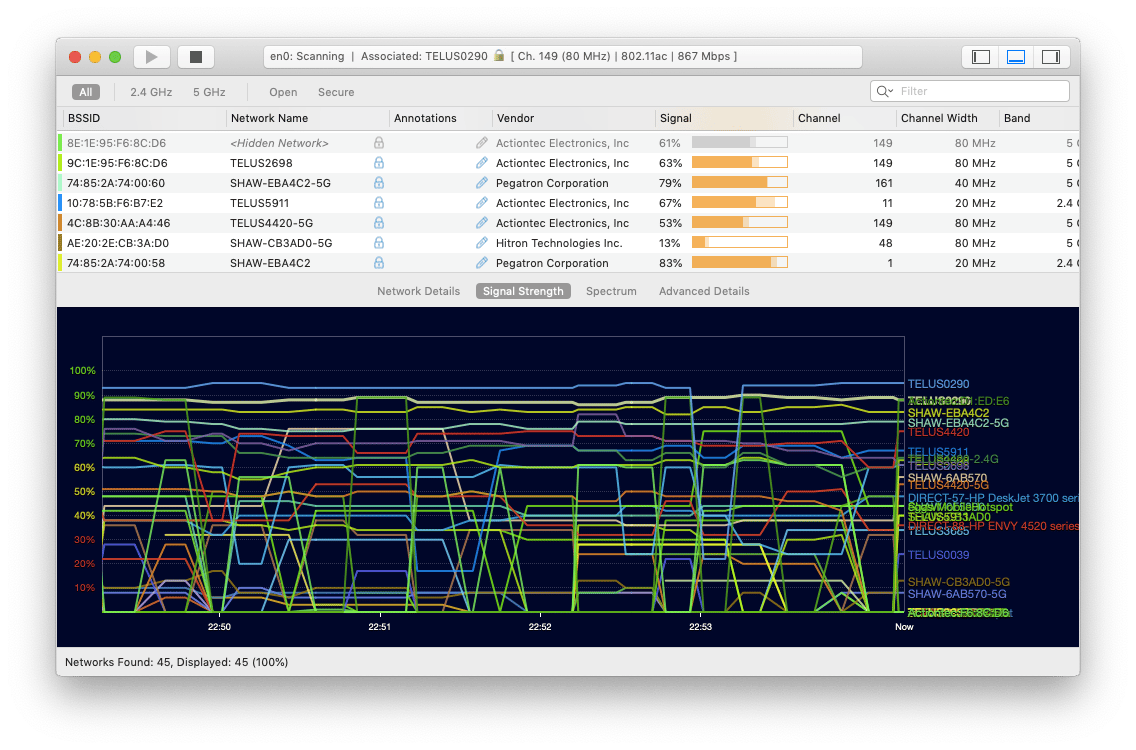
AirPlay not working on Mac: troubleshooting and fixes
When attempting AirPlay from your Mac to an Apple TV or any other AirPlay-compatible device, always check the “essentials” first — make sure that both of your devices are connected to the same Wi-Fi network, are close to each other, and none of them is in a sleeping mode.
Next check that AirPlay isn’t blocked by Content & Privacy Restrictions or Firewall settings on your Mac: for that go to the Apple Menu ➙ System Settings ➙ Network ➙ Firewall
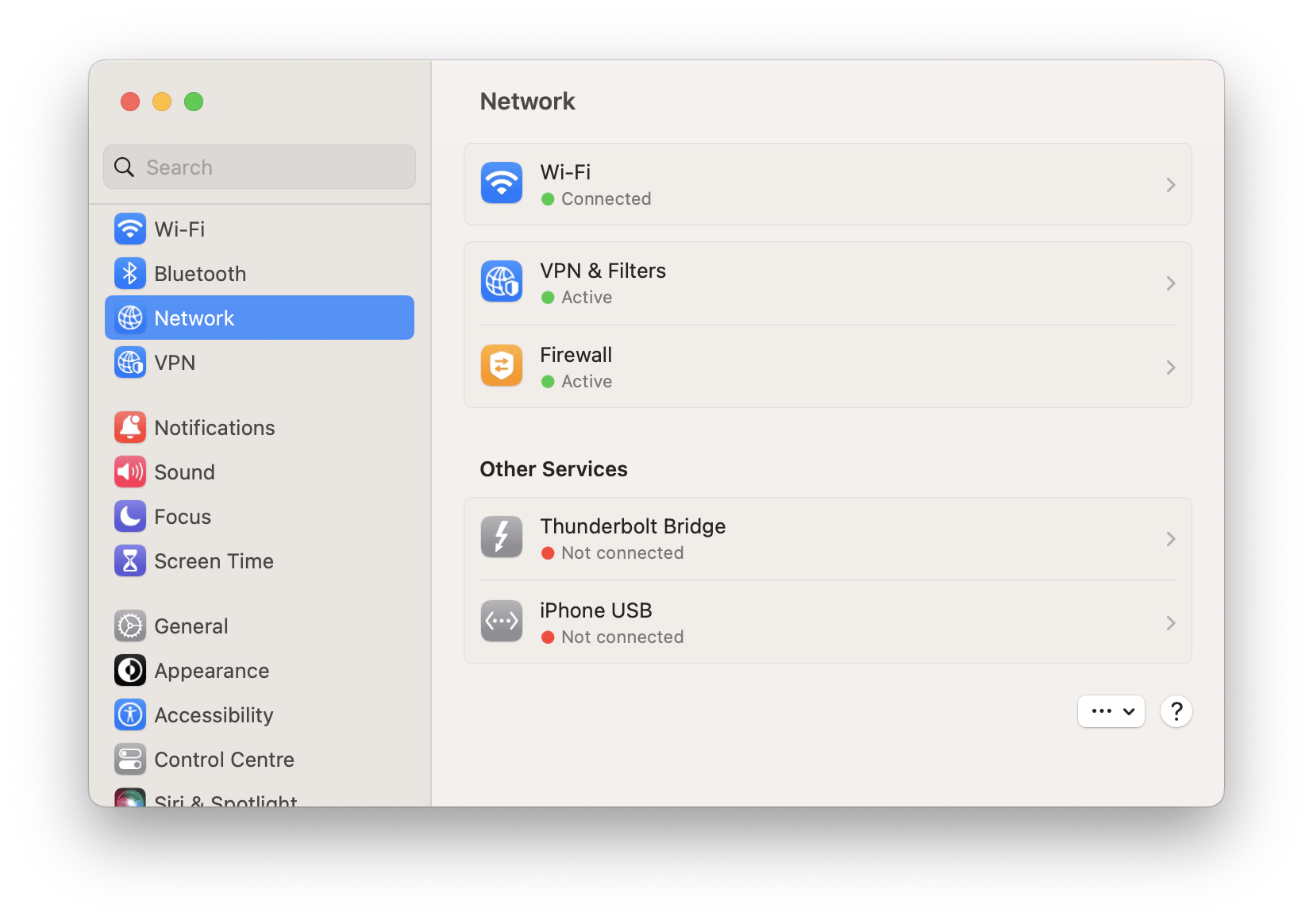
and do the following:
- Turn the Firewall off or uncheck “Block all incoming connections” in Firewall Options
- Check “Automatically allow built-in software to receive incoming connections”
If the idea is to AirPlay to your Mac, try loosening the requirements for devices that can AirPlay to you. To allow anyone nearby to see you Mac as an AirPlay target, edit your macOS AirPlay Receiver settings (Apple menu ➙ System Settings ➙ General ➙ AirDrop & Handoff, turn on Airplay Receiver and whose devices can use AirPlay to stream content to your Mac using pop-up menu next to "Allow Airplay for"):

Finally, if the issue of AirPlay not working isn’t getting resolved, try a normal restart first — if that doesn’t help, reset your NVRAM and PRAM so that your Mac restores the default settings for its hardware. (To perform a NVRAM reset, hold Option + Command + P + R keys as you restart.)
A game-changing trick to remember when you’re AirPlaying to your Mac and don’t want to miss out on the surround sound experience of a bigger screen setup — try playing your files using Boom 3D audio enhancer.
Boom 3D is there to redefine your listening experience on Mac as you know it. It’s boosting both quality and volume of your audio and lets you unlock your Mac’s audio hardware peak performance:
- Enjoy the app’s innovative flagship virtual surround sound feature that simulates the experience of surround sound and can turn even basic speakers into the ultimate audiophile experience
- Get the most out of listening to your music on Mac with an extensive palette of advanced genre-based equalizer presets
- Fine-tune your sound with slider-based equalizer
- Set custom volume levels for different apps in your system
- Push your audio volume higher than the system default for your Mac with Audio Boost without sacrificing audio quality
- Control your sound wirelessly from your iPhone or iPad
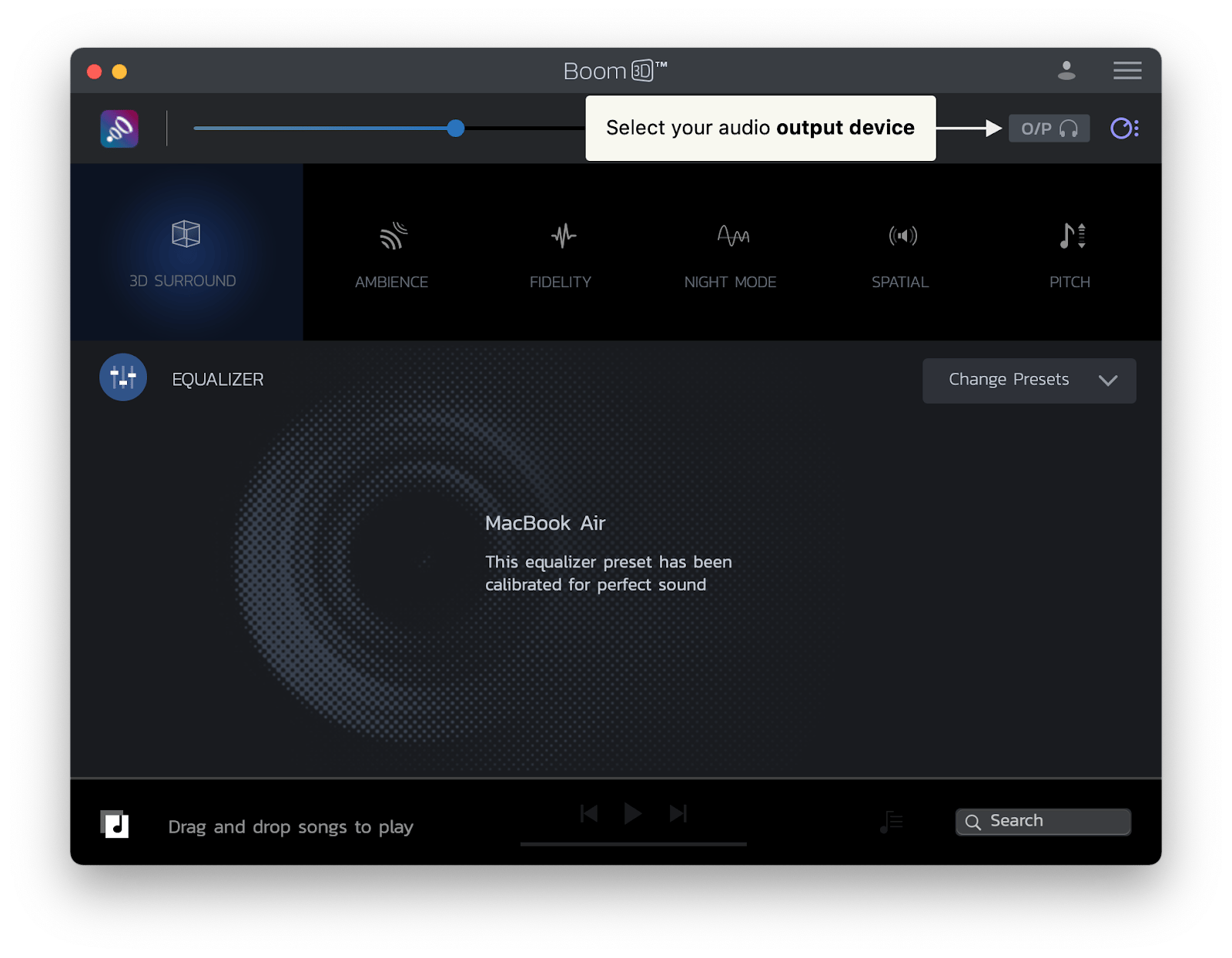
AirPlay not working on iPhone and iPad: troubleshooting and fixes
If you’re frustrated with AirPlay not working on your iPhone or iPad, first be sure to check that your device supports AirPlay. It’s easiest to do it from the Control Center on your iPhone or iPad.
To open the Control Center:
- Swipe down from the right corner of your iPhone’s Home screen
- Swipe up from the bottom of the Home screen on your iPad or if you have an older iPhone model
If you see the Screen Mirroring icon, your iPhone or iPad is AirPlay compatible.
Once you’ve taken care of all the general AirPlay requirements and have checked that your device supports AirPlay, there isn’t much left for you to do to fix the issue, other than to try turning WiFi off and on again to shake off possible connectivity issues and restart your iPhone or iPad.
AirPlay not working on Apple TV: troubleshooting and fixes
What you could also do is install JustStream and be done with AirPlay not working on your Apple TV.
The app will help you ignore any of the AirPlay’s bugs and stream your videos from Mac to Apple TV or Chromecast-enabled devices (which covers about all modern TVs). JustStream supports 4K and HD resolutions, so you’ll be able to maintain the best quality.
Another great trick to keep things simple in your workflow on Mac is using One Switch.
One Switch helps you access macOS features fast by keeping all the switches important for you in one place: you can instantly hide desktop icons, turn the Dark Mode on, connect your AirPods to Mac, or choose from other options you’d like to save time on.
![]()
What is AirPlay, and how to fix Apple AirPlay not working?
AirPlay is a great Apple feature that makes it easy for us to enjoy the content we love with comfort and richness of experience, provided by big screens and advanced audio systems — no matter what Apple device we’re streaming from. As a native Apple feature, AirPlay options present themselves automatically when we want to share files from our iPhone, iPad, or Mac. This also means that when things go wrong with AirPlay not working, the best thing we can do is take care of our WiFi connection, using NetSpot and WiFi Explorer to ensure the strength of the signal.
The general idea for fixing Apple AirPlay not working comes down to: install the latest software updates, restart your devices, make sure to connect to the same Wi-Fi, and hope that AirPlay will kick back in. You can also go straight to enjoying your movie on the big screen with easy streaming from your Mac with JustStream. And don’t forget to turn your acoustic experience up a notch with Boom 3D when playing media on Mac.
Most importantly, don’t pass on a chance to try Transloader, NetSpot, WiFi Explorer, Boom 3D, JustStream, and One Switch for free with the seven-day trial of Setapp, a platform of best-in-class iOS and macOS productivity apps. Learn how to fix Apple AirPlay not working and check out more than 240 new options to boost your performance.
FAQ
What is AirPlay?
AirPlay is Apple’s technology that lets you wirelessly stream content from one device to another — typically to an Apple TV (or AirPlay-compatible smart TV), your favorite speakers, or MacBook.
This way you can enjoy:
- Watching the latest movies or home videos, as well as viewing photos from your iPhone or iPad on your biggest screen (with built-in controls conveniently accessible from your iPhone to play, pause, rewind, or turn volume on your TV)
- Playing your favorite tracks or podcasts across multiple speakers throughout your home (while still being able to take a call or play a game on your device without interrupting your music)
- Mirroring your screen to share websites and presentations with everyone in the room, as well as solo social media browsing
- Dual-screen gaming with your Apple device as a controller to a game happening on the big screen
And the best part is that you don’t need any additional equipment or apps to make use of all these amazing features. AirPlay is already built-in in your Apple device and shows up automatically, once you’re on the same WiFi with the device capable of receiving AirPlay. All you need to do is simply tap the AirPlay icon and send your content playing on a bigger screen or your favorite AirPlay-compatible acoustic system.
What are the signs of AirPlay not working?
You know something’s wrong with your Apple AirPlay when you have problems using AirPlay with your Apple TV, when your AirPlay’s lagging, freezing, or sending out error messages about unsupported files formats.
Do my devices need to be on the same Wi-Fi network for AirPlay?
Not always. AirPlay supports a peer-to-peer feature that uses Bluetooth for device discovery and then establishes a direct Wi-Fi connection between them.
To enable it:
- Turn on Wi-Fi and Bluetooth on both devices.
- Move them close together to allow pairing.
- Switch to your main Wi-Fi network (SSID).
If it still doesn’t work, connect both devices to the same Wi-Fi network (SSID) and try again.
Why do I get a black screen when mirroring video?
You might see a black screen when mirroring video due to DRM or HDCP restrictions from certain streaming services or apps. The easiest fix is to open the service’s native app on your Apple TV instead of mirroring. Alternatively, you can open the video app on your device and use its built-in AirPlay button to stream directly.
If AirPlay completely fails, try using an alternative app such as JustStream to mirror or stream from Mac to any TV or Chromecast in 4K/HD, or Transloader to send downloads remotely when on different networks.






